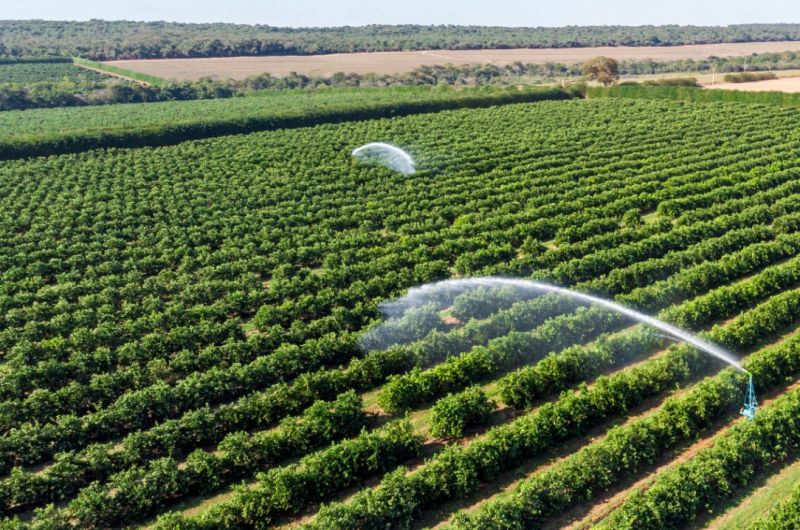In a world facing the challenges of a growing population, changing climate patterns, and limited arable land, the quest to maximize crop yield has become more critical than ever. Crop yield, the amount of harvested produce per unit of land, is a key metric in agriculture. In this 800-word blog post, we will explore the various strategies and technologies that farmers can employ to increase their crop yields while maintaining sustainability. For more information regarding hydroponic plant one can visit our site https://hydroponicglobal.com.au/.
Understanding Crop Yield
Crop yield is a measure of agricultural productivity and is typically expressed in units like bushels per acre, tons per hectare, or kilograms per square meter, depending on the crop and regional preferences. It is influenced by several factors:
1. Crop Selection: The choice of crop plays a significant role in determining yield. Some crops naturally produce higher yields than others, and selecting the right crop for the local climate and soil conditions is crucial.
2. Soil Health: Healthy soil is the foundation of high crop yields. Soil that is rich in organic matter and nutrients provides a favorable environment for plant growth. Practices like crop rotation and cover cropping can improve soil health.
3. Water Management: Proper irrigation is essential for optimizing crop yield. Too much or too little water can negatively impact yields. Drip irrigation and precision watering systems can help conserve water while ensuring crops receive adequate moisture.
4. Nutrient Management: Plants require essential nutrients to grow, and the right balance of nutrients is crucial for high yields. Soil testing and precision nutrient application can help ensure plants receive the nutrients they need.
5. Pest and Disease Control: Pests and diseases can devastate crops, leading to reduced yields. Integrated pest management (IPM) strategies, which combine biological, chemical, and cultural practices, can help protect crops while minimizing damage.
Strategies for Maximizing Crop Yield
1. Precision Agriculture: Precision agriculture involves using technology like GPS, sensors, and data analytics to make informed decisions about planting, fertilizing, and irrigating. It allows farmers to optimize resource use and maximize yields while minimizing waste.
2. Improved Crop Varieties: Plant breeding and genetic modification have led to the development of crop varieties that are more resistant to pests, diseases, and environmental stressors. These varieties often yield more than their conventional counterparts.
3. Crop Rotation: Rotating crops can help break pest and disease cycles, improve soil health, and increase overall yield. Different crops have different nutrient needs and contribute to soil health in varying ways, making rotation an effective strategy.
4. Cover Cropping: Cover crops are planted between cash crops to protect and improve the soil. They can suppress weeds, prevent soil erosion, and add organic matter to the soil, enhancing its fertility and ultimately increasing yields.
5. Efficient Irrigation: Modern irrigation systems, such as drip and pivot systems, ensure that water is delivered precisely where and when it’s needed. This reduces water waste and can result in higher yields, especially in regions prone to drought.
6. Pest and Disease Management: Integrated pest management combines multiple strategies, including biological controls, natural predators, and judicious use of pesticides. By minimizing pest and disease pressure, crop damage is reduced, leading to higher yields.
7. Climate-Smart Agriculture: As climate change impacts become more pronounced, adapting farming practices to local climate conditions is crucial. This may include adjusting planting dates, selecting drought-resistant crop varieties, and implementing soil conservation techniques.
8. Data-Driven Decision Making: Farm management software and data analytics can provide valuable insights into crop health and yield potential. Farmers can make data-driven decisions to optimize planting and harvesting times, among other factors.
Challenges and Considerations
While increasing crop yield is a laudable goal, it’s essential to do so sustainably. Overreliance on synthetic fertilizers or monoculture farming can lead to soil degradation, nutrient runoff, and other environmental problems. Balancing high yield with environmental stewardship is a delicate task.
Moreover, increasing yield doesn’t always equate to more food security if it results in the overproduction of a single crop at the expense of dietary diversity.
Conclusion
Maximizing crop yield is an ongoing challenge for farmers around the world. By employing strategies like precision agriculture, improved crop varieties, crop rotation, and efficient irrigation, farmers can increase yields while preserving natural resources and reducing environmental impact.
Balancing the need for increased yield with sustainable farming practices is essential for ensuring food security and environmental sustainability for generations to come. It’s not just about producing more; it’s about producing more efficiently and responsibly to meet the challenges of our ever-changing world.


